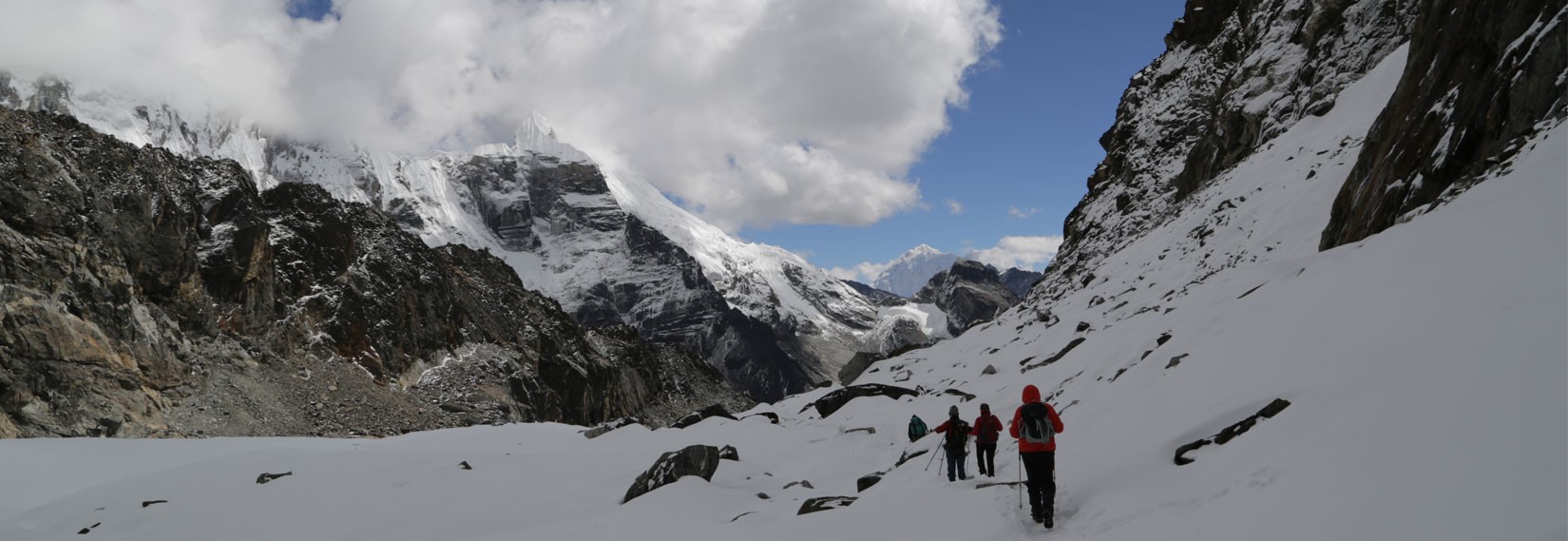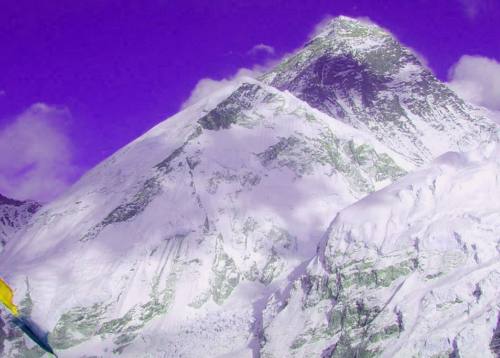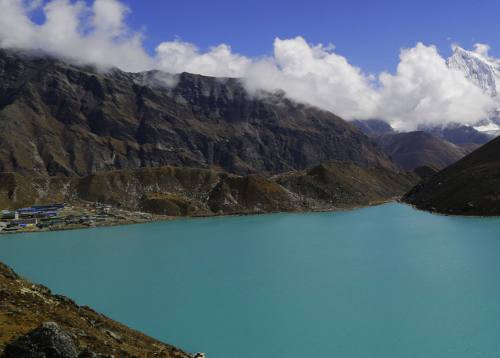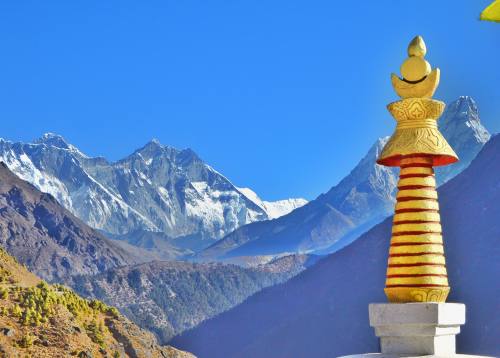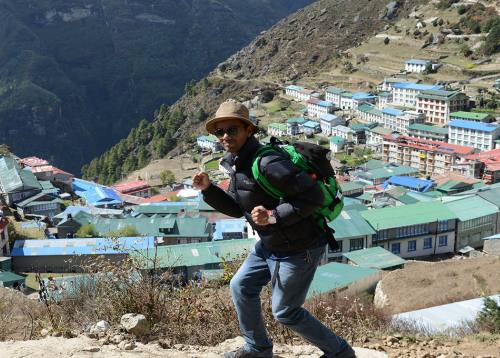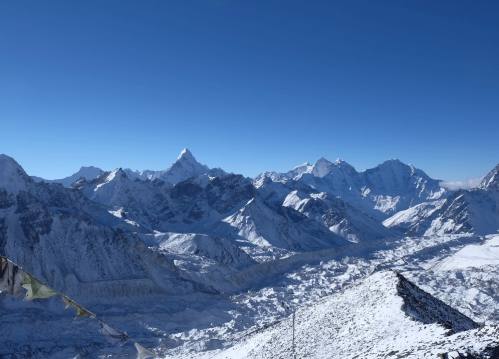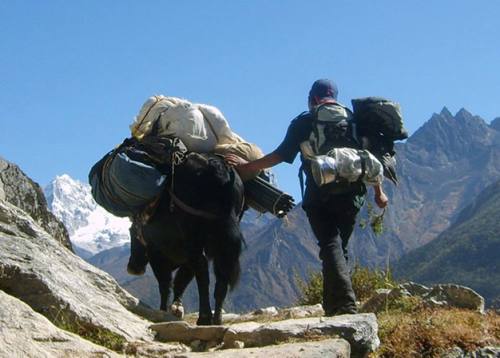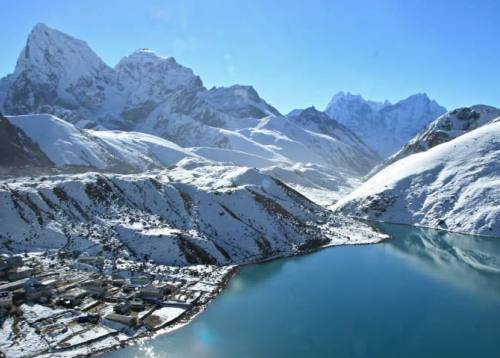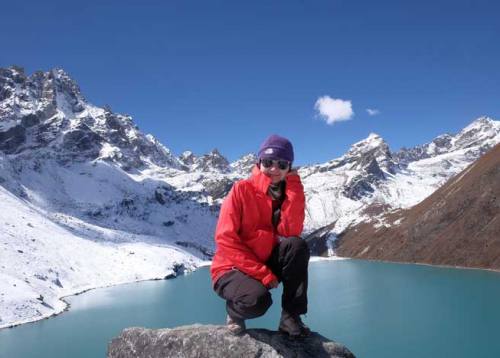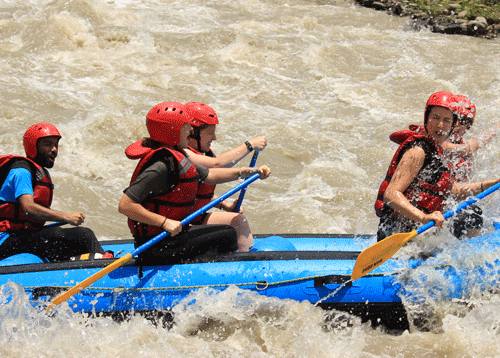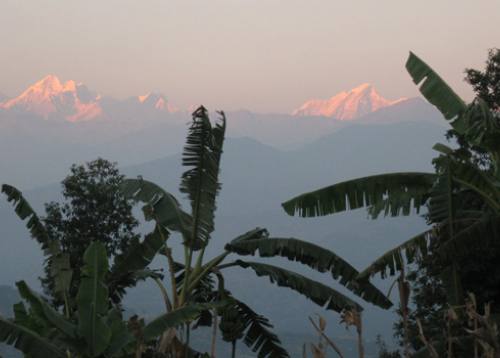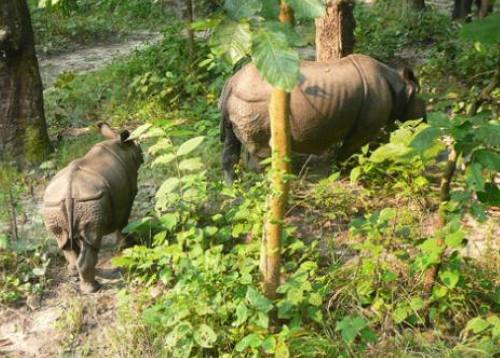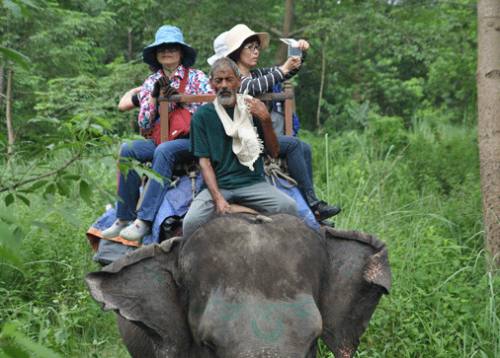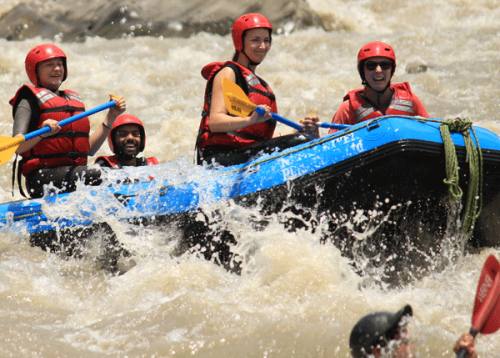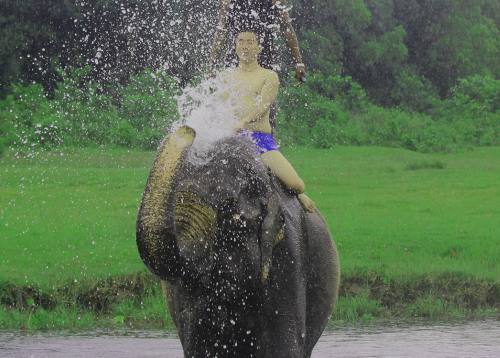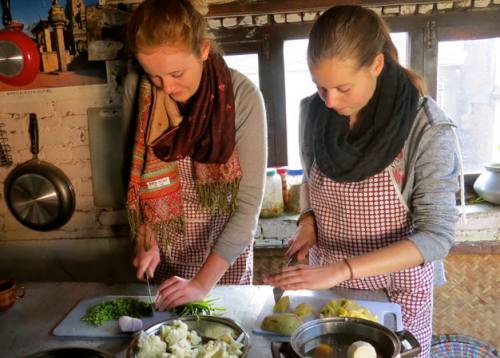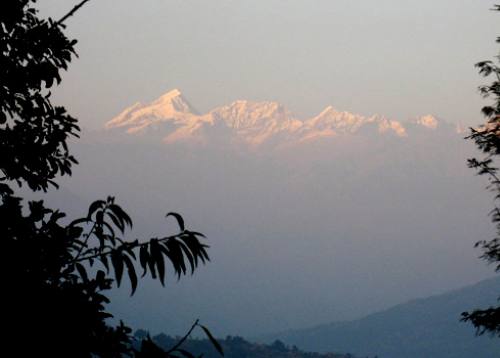Jiri to Everest Base Camp Trek
- Trip Duration22 Days
- Trip GradeModerate to Strenuous
- Max. Altitude5,364m
- Cost Starting FromUS$ 2010
- Destination: Nepal
- Meals: Breakfast, Lunch and Dinner
- Transportation: Public Vehicle
- Accommodation: Local Mountain Lodge
- Max. Altitude: 5,364m
- Min. Group Size: 02 Minimum - 10 Maximum
Highlights
- Experience the lifestyle of the Himalayan people, their religion, customs and traditions
- Follow the footsteps of renowned climbers; Tenzing Norgay Sherpa, Sir Edmund Hillary
- Explore alpine forest, Buddhist monasteries, authentic Sherpa Villages and unique culture of legendary sherpa's.
- Scenery of world’s most spectacular mountains including Mount Everest.
- Years old mani stone, engraved with Tibetan Buddhist prayers
- Flora and Fauna in side Sagarmatha National Park, listed in UNESCO heritage sites.
Trek to Everest Base Camp from Jiri is an adventure trek for those who are physically fit, in good health, enough holidays and are determined to challenge in the himalaya.
Jiri to Everest Base Camp follows the original route into the Solu-Khumbu region used by the early explores of Mount Everest. A new road allows buses to continue beyond Jiri to Shivalaya where the trek now begins. The Sherpa people, formerly from Tibet, live chiefly in the Solu region along the Dudh Kosi River and the Khumbu region above Lukla. This Jiri to Everest Base Camp trekking route is still used by porters and pack animals, but fewer trekkers than Lukla to Base Camp Trek.
The Everest Base Camp trek via Jiri trail begins at an altitude of 1800 m and crosses numerous ridges: dropping low to rivers at around 1500 m and ascending passes over 3000 m. Rest and acclimatization days are taken at Junbesi (2680 m, visit the Thubten Chholing Monastery) and at Namche Bazaar (3440 m, the business hub of the Khumbu region). Beyond Namche, the ‘up and down’ trail continues to rise while night-time temperatures drops and you move deeper into the mountains. Beyond Tengboche (with its large monastery, rhododendrons and great scenery) the villages become smaller– and the going tougher yet more dramatic. Vegetation now becomes more stunted and eventually gives way to rock, ice and pure breathtaking glacial landscapes.
A final acclimatization day is taken at Dingboche. Then slow walks up to Lobuche, Gorak Shep and along the “tracks” to Base Camp. After a second night at Gorak Shep, an early morning trek up Kala Patthar should offer stupendous views that include the peaks of Pumori, Everest and the South Col, Nuptse and Lhotse, set amongst numerous other ranges.The down-journey to Namche retraces the up-route more quickly and from there it is a day’s walk to Lukla for an early morning flight back to Kathmandu.
Itinerary
Day 1Arrival in Kathmandu 1350M/ 4428Ft
Our representative will meet you at the airport and transfer you to your hotel. Once you’ve settled in, we’ll introduce you to your trekking guide. Your first evening, we’ll go over some last-minute details and dinner at authentic Nepali restaurant.
Day 2Kathmandu – Shivalaya (1,767m/5,510ft): 8-10 hrs bus drive
Morning drive along with Kathmandu/Kodari (overland Tibet entry point) highway in the beginning 3 hours and cross Sun Koshi river toward Mude(3540 m) following crumble ascended bumpy road . It’s a scenic drive along with terraced field, typical villages and panoramic view of eastern Himalayan including Ganesh Himal, Lantang Lirung, Dorje Lakpa and many more snow-capped ranges. Finally, a long picturesque bus journey arrives a little river bank town Shivalaya. Overnight at Hotel in Shivalaya.
Day 3Shivalaya – Bhandar(2,200m/7,200ft): 5-6 hrs trek.
From Shivalaya the route crosses a stream, then starts a steep climb toward the next pass Sangbadanda at 2150m) Climb continue less steeply pass several isolated , but large and prosperous houses. The trail climbs steeply in the forest to another tea shop at Mabhir, cross another stream and final climb to pass at 2705m Deurali. This pass signifies now we are entering an area donated by Tibetan culture because of an impressive array of long mani wall including beautiful mountain range though on distance. There is sweeping view of the Likhu Khola valley and Bhandar, a large Sherpa settlement far below in a hanging valley. Trail drops about two hours to arrive our day destination Bhandar. Overnight at Hotel in Bhandar.
Day 4Bhandar – Sete (2,520m/8,220ft): 5-6 hrs.
From the village square of Bhandar the trail descends through the lower fields of village, then follows a small stream. It cross the stream and descends through deep forest. Leaving the forest, the trail drops into a canyon, passing Barandas, where local kids sell walking sticks to help you out on the steep descent toward another riverbank little Sherpa town Kenja. (1570m) Trail ascends steeply toward Lamjura pass , the first part of ascend is very steep, then it become less severe as you gain elevation. After about two hours of climbing you reach Chimbu, at 2140m. There is a trail junction, take right hand fork to Sete. Overdnight stay at Hotel in Sete.
Day 5Sete – Junbesi (2,680m 8,850ft) 6-7 hrs. via Lamjura Pass 3530 M
It’s a long day, but fairly gradual climb although in spots it gets steep from Sete to the top of Lamjura Pass (3530m) The way is scenic and varied through the rhododendron, magnolia, maple and birch forest long ranges of Himalayas on the background. In spring the ridge is alive with blooming rhododendron – white, red and pink blooms over the entire hillside. The day also delightful for bird lover, some of most colorful ones are found in this zone. Since you probably be crossing the pass about noon or early afternoon, it will be cloudy, cold and windy. The route descends down steeply eastern side of the pass about 400 m through fragrant fir and hemlock forest to the stream and small wooden Hotel. Trail climbs again to the huge painted mani wall at the head of the valley, then climbs over the ridge to a vintage point overlooking Junbesi a splendid Sherpa village amidst beautiful surroundings at 2680m.
Day 6Acclimatization in Junbensi
With its attractive lodges and bazzar atmosphere, Junbesi is a good place to take a rest day and there are some interesting side walk to Buddhist monasteries in the surrounding hills. Away to the north, Numbur (6959m), known in Sherpa as Shorong Yul Lha (god of Solu), over the large green valley. In the middle of Junbesi, the Tashi Thongmon Gompa was founded in the sixteenth century butt the monastery building destroyed several times by fire. By the large yellow- topped Stupa in the middle of the village, the Junbesi school is one of the largest Hillary school, with more than 300 pupils attending classes primary to higher secondary. In the opposite direction the valley of Junbesi Khola runs toward Thubten Choling monastery (300m)a large Tibetan monastery founded by the revered Trulsuk Rinpoche who fled to Nepal from Rongbuk Gompa in Tibet with large group Anis (nuns)and monk in the 1960s. Since then, many more refugees have fled to Thubten Choling en-route to join the Dalai Lamaat Dharmashala in India. It makes worth to visit either before lunch or after on the rest day.
Day 7Junbesi – Nunthala (2,250m/7,500ft): 5-6 hrs.
The trail cross the Junbes Khola on the wooden bridge at 2610m. The route to Nunthala follows the left hand trail that leads steeply in the trees looping in and out of side ridge to Khurtang at 2980m which has first view of Everest (8848m), Thamserku (6608m) and Mera Peak (6461m). Everest seems like dwarfed by its much lower neighbors. The trail turns north, still climbing, then descend down to suspension bridge over the Ringmo Khola and ascends to Ringmo village toward Takshindo La at 3071m. marked by large chorten. A few minutes below the pass, on the eastern side, the trail passes the isolated monastery of Takshindo., a superb example of Sherpa monastic architecture at 2900m. The trail descends through conifer and rhododendron forest alive with birds through dense forest. Trail crosses many picturesque streams on wooden bridges just before it reaches Nunthala (Manidingma) at 2250. Overnight at Hotel in Nunthala.
Day 8Nunthala – Bupsa (2,360m/7,750ft): 5-6 hrs.
From Nunthala the descends continues to Dudh Koshi (milk river), cross large suspension bridge then trail ascends through terraced field and yard of houses Jubing a Rais settlement to Kharih khola at 2010m. From Khari Khola you can see your next destination a cluster of building above on the ridge Bupsa. The trail descends from the village and crosses the Khari Khola on a suspension bridge near some water-driven mills at 1930m, then makes a steep climb to Bupsa(Bumshing) at 2300m. Overnight at Hotel in Bupsa.
Day 9Trek from Bupsa to Lukla(2840m)
After breakfast, We start out in the direction of Surkhe, climbing through the forest landscape before hitting the Sherpa village of Kharte. After that, we'll scale the Khari La Pass, passing the caves that porters occasionally use to rest on the way to Lukla. Another extended trek brings us to Surkhe, and finally the trekking hub of Lukla. A major starting point of trekking in khumbhu region.
Day 10Trek from Lukla to phakding (2610m)
After breakfast we will take easy walk through Chaurikharka village and descent towards Dudhkoshi Ghat. The trail follows the bank of the Dudhkoshi River until Phakding, a popular stopping point. We're a bit lower than Lukla at this point, all the better to acclimatize. Enjoy a bit of free time in Phakding, and then rest up at lodge.
Day 11Trek from Phakding to Namche Bazaar (3,440m/11,280 ft): 5-6 hrs.
We'll have breakfast in Phakding before gearing up for the trek to Namche, the biggest sherpa village in Nepal. Our trail takes us first over the Dudhkoshi River via a long suspension bridge, and then through a beautiful pine forest to Monjo, about two hours away. Soon thereafter, we will approach the entrance to Sagarmatha National Park for a brief permit check and then descend to Dudh Kosi River (spotting Mani stones along the way!) en route to Jorsale. Lunch will be served here, and then it's uphill to Namche. Our path along the riverbank is flanked by two crossings, one of which is the Hillary Suspension Bridge. It’s a tough climb up the hill to our resting place, but you'll be rewarded in Namche Bazaar with another glimpse of Everest in its majesty.
Day 12Acclimatization in Namche Bazaar
Today will be spent resting and allowing our bodies to become acclimatized to the lofty altitude. Spend the day exploring Namche Bazaar. Check out the Sherpa museum for an overview of the Sherpa culture and history of mountaineering. On Saturdays, the Hatt Bazaar is open for trading and an intimate look at the locals’ marketplace. It is part of the larger Namche Bazaar, a shopping hub filled with all manner of trekking and mountaineering clothing and equipment.
Day 13Namche Bazzar - Tengboche (3,870m/12,694ft): 5-6 hrs.
The trail leads moderately flat with superb view of Mt. Everest, Nuptse, Lhotse, Ama Dablam and close up view of Thamserku, Khangtaiga. The trail continues wild lives spot of musk deer (a herd of Himalayan Thar) colorful pheasant (Danphe, National bird) Trail descend to Dudh Koshi river where few lodges and series of picturesque water driven prayer wheels. Cross suspension bridge over Dudh Koshi River a steep climb through pine and juniper forest, walk about 2 hours bring you to Tenboche. The famous Gomba (Tengboche Monastery) with the background of Ama Dablam, Nupte, Mt. Everest and many more peaks. During October/November in full moon the colorful Mani Rimdu festival is held here with masked dancing and Tibetan opera in the monastery courtyard.
Day 14Tengboche - Dingboche (4,360 m/14,300 ft): 5-6 hrs.
The trail descend to Deboche a small village with Chortens and Mani stone walls and nun monastery. Cross suspension bridge over Imja Khola (Imja Strasm) and gradually ascend to pangboche with the towering view of Ama Dablam (most beautiful mountain in Everest region) Trail follows upstream closer to Imja River fairly moderate up toward Imja valley. The trail fairly seen open to the confluence of Lobuche river and begin last part of the day to Dingboche the last Sherpa settlement with the beautiful terraced field enclosed by stone wall to avoid barley, buckwheat and potatoes from the cold wind and grazing animals. Overnight at Hotel.
Day 15Acclimatization day in Dingboche
It’s another scheduled rest day of the trek. This increases your fitness and oxygen level into thin air. A day hike returns 4/5 hours up to Imjatse valley to Chukkung (4730m /15600ft) is perfect destination to acclimatize. Trail leads with the breathtaking landscapes, marvelous view of Ama Dablam, Lhotse, Imja glacier onwards east of the Imjatse Valley. Although the trek is gradual ascend, you will feel the thin air as the altitude gains slowly towards Chhukung. Lunch in Chukung observing tranquility of Imjatse valley, glacier and Himalays. Afternoon retrace to Dingboche and overnight.
Day 16Dingboche – Lobuche (4,940/16,207ft): 7km, 5-6 hrs
Trail climbs to ridge with the towering view of Tawache peak & Cholatse. Trail continues through the Yak grazing pasture to Dhukla (4620 /15158ft) crossing a wooden bridge on roaring stream. Trail leads steep up to gravely terminal moraine of the Khumbu Glacier for about one hour, then bears left to the group of memorialsto lost climbers and Sherpas, including Scott Fischer who died in the 1996, Everest disaster. This place has awesome view of Khumbutse (6623m), Lingtren (6697), Pumori (7145 m) and Mahalangur Himal.Everest is hidden behind the towering wall of Nuptse an Lhotse. Follow the valley upstream about an hour to Lobuche. Overnight at Guest House.
Day 17Lobuche - Gorak Shep (5,160m/17,000ft) - Everest Base Camp (5,364 m/17,594 ft): - Gorak Shep, 15km, 8-10 hrs
The trail follows windy and rocky path with crest of north ridge to Everest along with Mt. Pumori, Mahalangur, Lingtern, Khumbutse, Nuptse, etc. Trail continues along side of Khumbu Glacier to Gorakshep. Check in to Hotel, Lunch and afternoon set out to visit world’s highest base camp Everest Base Camp. Base Camp has no view of Mt. Everest but fantastic view of Khumbu Icefall and colorful camp site of Everest expedition during expedition season. Trek back to Gorakshep for overnight.
Day 18Gorak Shep - Kala Patthar (5,545m/18,192 ft) - Pheriche (4,280m/14,070ft): 15km, 8-10 hrs
The trail climbs 2/3 hrs. up to Kala Patthar (5545 m/18192 ft) early in the morning to see first day sun light from top of the world (Mt. Everest) This is milestone of the trek to inspect panoramic view with the fantastic sunrise over Mt. Everest, Mt. Pumori, Mt. Lingtren, Khumbutse, Changtse, Mt. Lhotse, Mt. Nupte, Mt. Ama Dablam and many more After accomplish Kala Patthar, trek down to Gorakshep and retrace down to Pheriche to the warmer and better night sleep. Overnight in Pheriche.
Day 19Pheriche – Phortse (3,750m/12,300ft): 4-5 hrs.
Trail descend down through the highest Sherpa permanent settlement whole year around. It’s believed Pangboche monastery is the oldest in Khumbu region built in 16th century. The trail continues over Imja Khola (Imja river) along the hillside with wildlife site of musk deer, mountain goat(Himalayan Thar) and many species of birds including colorful Pheasant (Danphe- Nepal National Bird) Trail alternatively offers Sherpa Cultural Heritage and more quite as most of the tourist follow Everest Highway route to Namche Bazar. Overnight in Phortse. (Gateway to Gokyo lake)
Day 20Phortse – Monjo ((2,800m/9,200ft): 5-6 hrs.
Trail leads to the confluence of Everest Base Camp trek and Gokyo Lake trek. Then follow the wider trail round aside the hill to Namche Bazar. Descend down to National Park check point to lower green valley. Jorsalle then right up next is final destination Monjo. Overnight in Hotel.
Day 21Monjo – Lukla (2,780m/9,175ft): 5-6 hrs.
Trail follows down steam of Dudh Koshi river retracing to Phakding. Trail leads to Lukla scaling different Sherpa villages crossing a suspension bridge above Thado Kosh. Last section of the day, about 45 minutes ascend to accomplish entire trek. Reconfirm flight Ticket and see off to local porters. Overnight in Hotel.
Day 23 Lukla – Kathmandu by Air (1,300m/4,264ft): 35 minutes airstrip.
Fly Back to Kathmandu (35 minutes) in the morning and transfer to Hotel. Free in the afternoon. Overnight in Kathmandu.
Day 24Final Departure or Join another tour / Trek
Breakfast at hotel and then take in some last-minute shopping in Kathmandu. We'll make sure you arrive at Kathmandu International Airport with plenty time before your flight home. Home sweet home
Trip Cost Details
Cost Include
- All airport pick up and drop off from the airport
- Accommodation in Kathmandu with bed and breakfast basis
- Kathmadu valley City tour escorted with guide and driver
- Transportation from Kathmandu to Shivalayat by public bus
- Flights Lukla–Kathmandu (Weight limit:10 kg main baggage and 5 kg hand per passenger/flight)
- All necessary paper work and trekking permits (National Park permit and TIMS)
- An experienced English-speaking Govt. registered trekking guide and local porters to carry luggage (2 trekkers: 1 porter)
- ?Accommodation in mountian on twin sharing basis share toilet
- Guide and porter salaries, insurance, equipment, transport, food and lodging
- Full meals (Breakfast, Lunch and Dinner) at your choice with Tea/Coffee
- A comprehensive medical kit
- Oxymeter to update oxygen status into your body during the trek
- Mount Trails service charge and all government local taxes
Cost Exclude
- All personal expenses like alcoholic beverages, bottled drinks, telephone calls, laundry services etc.
- Medical and travel insurances
- International airfare and taxes
- Nepal Visa fees i.e. USD 25 for 15 days visa
- Emergency helicopter rescue charges
- Main meals in Kathmandu (lunch & Dinner )
- Tips, gratuities, etc.
- All extra services if required (except motioned in 'The Price Include' section)
Trip Map
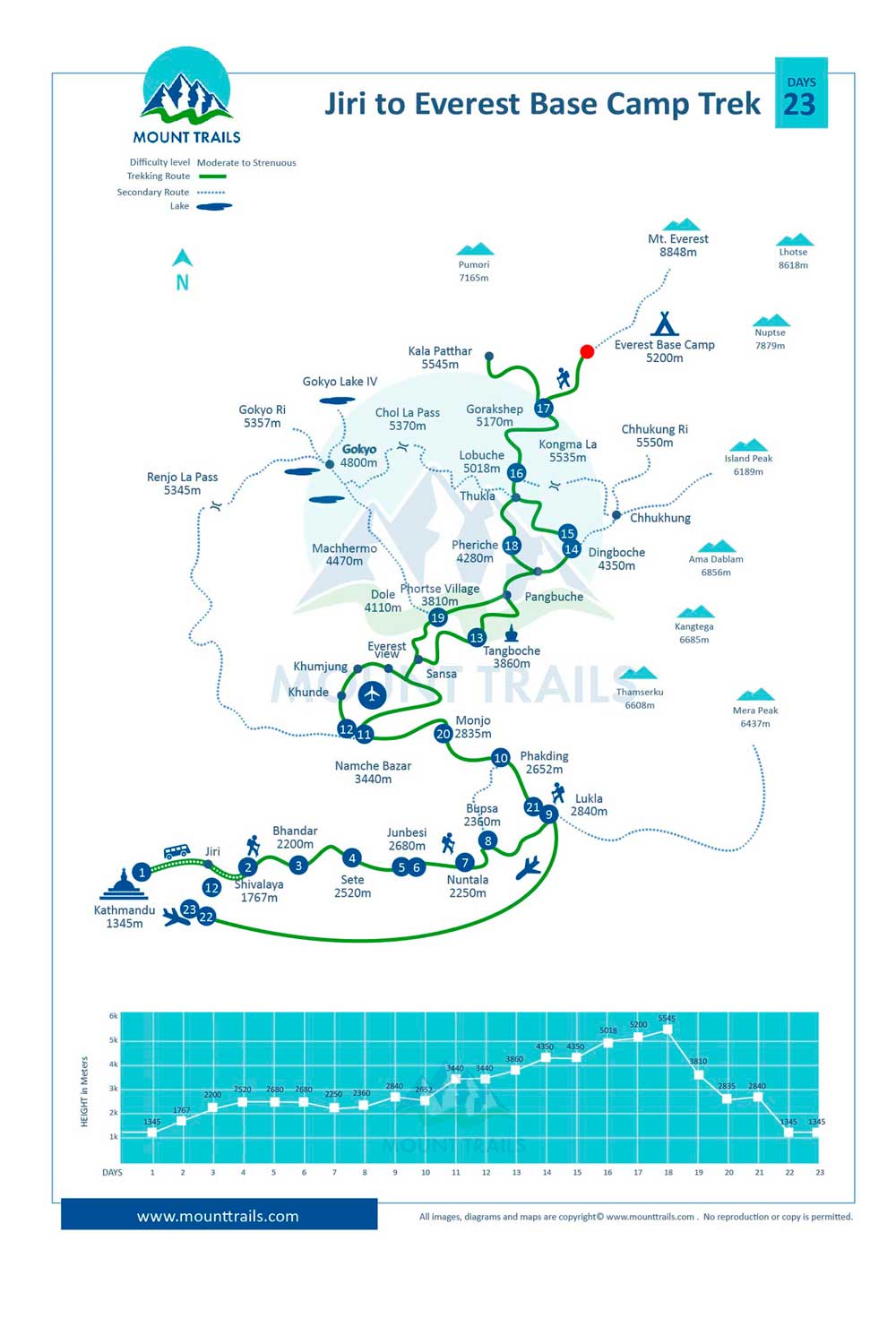
Useful Info
Meals
Eating is a big part of Holiday. Travelling with Mount Trails , you experience the vast array of wonderful local fresh Nepalese , Chinese, Continental, Italian and several local cuisines. Breakfast, Lunch & Dinner are included in the package. Your guide will suggest delicious, hygienic and each place special food during your trip. Mountain restaurant owner prefer not to order many dishes and waste food as they would like to cater more trekkers with limited food before run off stuck. Its a week or more days hard work to porters and caravans to bring food to these places. During this trek you will usually have breakfast and dinner at the same Lodge, lunch will be eaten at one of the trail side restaurants en-route.
Accommodation
A Local Tea House is the combination of guest house in Himalayas, restaurant. Private rooms are available in most Tea Houses, except for high altitudes ones where it will be just dormitories. The lodges are fairly basic and the rooms are spare with twin beds and very little additional furniture. Blankets are generally provided at the local lodge. There is a large dining room-cum-lounge, warmed by the bukhara stove (an iron cylinder, fitted with a chimney duct, in which a log fire is lighted. There is normally no electric lighting in the rooms unless the village has hydroelectric power. The dining room usually hassolar lighting. Most teahouses now also have electricity for charging mobile phones and cameras and it will be extra chargech which will be minimun
Drinking water
Mount Trails provides unlimited chlorine/Iodine treated water during the trek. All tea houses have mineral water and boiled water for trekkers upon additional cost. We discourage the purchase of Mineral water and bottled water while on the Trek as plastic bottles aredifficult to dispose off and have become an environmental problem
Route Map
Mount TrailsnTrekking and adventures offers you complementary route map of the trekking region.
Trip Note
What to take
This is a very active trip, meaning you will be on the move most of the time, so pack as lightly as possible. We provide one porter for every two travellers; your trekking gear will be carried by the porter in a duffel bag that we will provide. The maximum the porters are allowed to carry 15 kgs per trekker means 30 kgs from 2 trekkers . Unnecessary luggage can left in Kathmandu Hotel and its absolutely free of cost. .
Important to note
Please read the Checklist section of this trip notes for additional details of what you need to bring for the trek on this trip. You will need to bring a comfortable medium sized day pack to carry the things that you will need during the day. This should have a waist strap or (better) a padded waist belt. The weather is subject to change in high altitude so layered clothing is recommended throughout the year.
